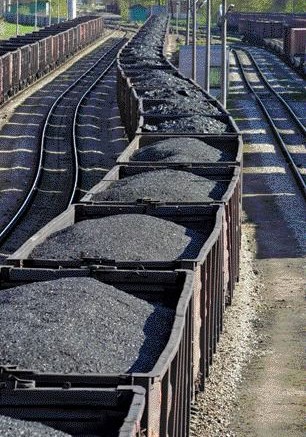Vancouver — Canadian coal producers, eyeing forecasts of rising consumption in Asia, are gearing up to take advantage of buoyant prices by expanding their thermal and coking coal operations within the next five years.
Hillsborough Resources (HLB-T, HLSRF-O), NEMI Northern Energy & Mining (NNE.A-T, NNEMF-O) and Western Canadian Coal (WTN-T, WXJXF-O) are among companies which are planning production increases in British Columbia, hoping that prices will remain high for the foreseeable future.
“While it does, we might as well take advantage of it,” says David Slater, CEO of Vancouver-based Hillsborough.
As contract negotiations between the world’s largest coal producers and Japanese steel mills continue this month, industry officials expect to see a slight softening in the price of coking coal, which is used primarily in steel production.
Forecasts are based on talks between BHP Billiton (BHP-N) and Japanese buyers, which are expected to pay US$105 per tonne for high-quality coking coal during the fiscal year starting April 2007.
That’s down US$10 per tonne from what the Japanese are paying in 2006, according to McCloskey Group, a supplier of analysis and data to the coal industry.
Talks between BHP and steelmakers in Japan establish the benchmark for producers of other varieties of coking coal, including Anglo American (aauk-q), Xstrata (XSRAF-O, XTA-L) and Rio Tinto (RTP-N).
Industry officials involved in the talks attribute the drop in price to the availability of additional supply from mines in Australia and Canada.
Still, as they prepare to begin their own round of talks with the Japanese, industry officials in Canada say they are quite comfortable with the near-term price outlook.
“We are certainly profitable at these levels,” says Trevor Hulme, a Vancouver general manager, with Anglo Coal Canada, a subsidiary of Anglo American, the South African mining conglomerate.
Anglo is watching the price negotiations closely after agreeing to join a consortium of northeastern B.C. producers known as the Peace River Coal Limited Partnership.
The Peace River partnership, comprised of Anglo, Hillsborough, and NEMI, is planning to raise its annual production to around 5 million tonnes within five years from now, compared with 240,000 tonnes last year.
Based on those forecasts, Anglo is hoping that prices will not drop too far from the recent peak of US$125 per tonne, which was reached two years ago.
“We are hoping that the softening won’t go too low and that coking coal will continue to be a good business,” Hulme says.
Meanwhile, producers of thermal coal, which is used primarily in electricity generating plants, are hoping an expected decline in output from Indonesia over the next few years will help to drive prices higher from the current levels.
During the fiscal year starting April 2007, prices are not expected to stray very far from the current contract price of US$52.50 per tonne, which was negotiated between the Japanese power utilities and Xstrata.
“We think prices will at least stay the same or look to go up by US$2 or US$3 a tonne in 2008,” Slater says.
Based on those forecasts, Hillsborough is looking to increase its thermal coal production from the Quinsam mine on Vancouver Island to 600,000 tonnes a year, from the existing 520,000-tonne level.
Meanwhile, just weeks after the official opening of its Wolverine coal mine near Tumbler Ridge, B.C., Western Canadian Coal is hoping to have a permit in place to begin production from its nearby Brule deposit as early as February.
Western says its long-term goal is to be producing up to 5 million tonnes of metallurgical (coking) coal per year by 2009.
According to the International Energy Agency’s World Energy Outlook 2006 report, global demand for thermal coal is set to rise by 60% between now and 2030. Asian demand is expected to fuel the increase and China and India will be the main consumers. Coal-fired electricity generators will account for 81% of the increase in demand, the report said.
However, the usage of coal-fired generators is expected to be affected by other factors, including the cost of coal, government policies and the use of clean-coal technology.
In B.C., for example, the provincial utility’s selection of two coal-fired electrical generation plants as part of an effort to boost power supply in B.C. recently came under fire from municipal governments.
The Union of B.C. Municipalities recently passed a resolution urging the provincial government to place a moratorium on coal-fired projects and investigate all available electricity generating technologies to identify those that have the least impact on the environment and employ the most advanced technology.
One of the larger B.C. plants is a 187-megawatt facility, to be located near Tumbler Ridge, and is designed to burn both coal and biomass.
Opposition appears to stem in part from the fact that the proposed plants will use only conventional high-efficiency burning methods that do not curtail greenhouse gas emissions.
Meanwhile, Indonesia’s state power utility recently said 59 companies including those from Japan, China, India and South Korea aim to build coal-fired power plants with a total capacity of 7,000 megawatts on Java Island.
The government has ordered its utility to build 10,000 megawatts of coal-fired power generation capacity to reduce its exposure to rising oil prices, which have drained the country’s finances. Indonesia imports about a third of its oil products requirement.


Be the first to comment on "Coal train gaining momentum"